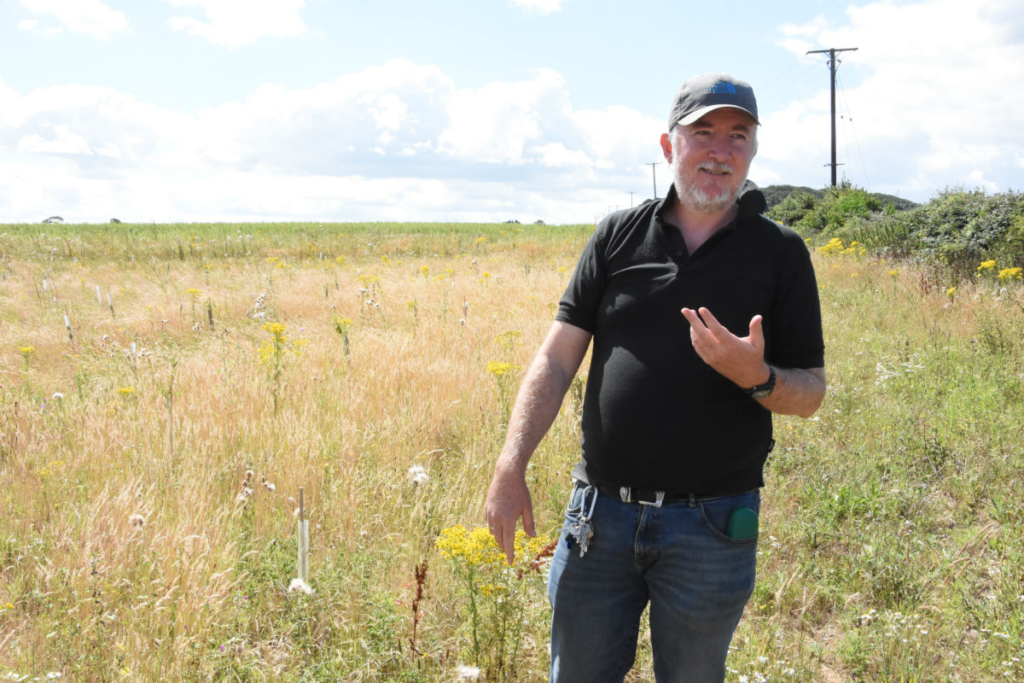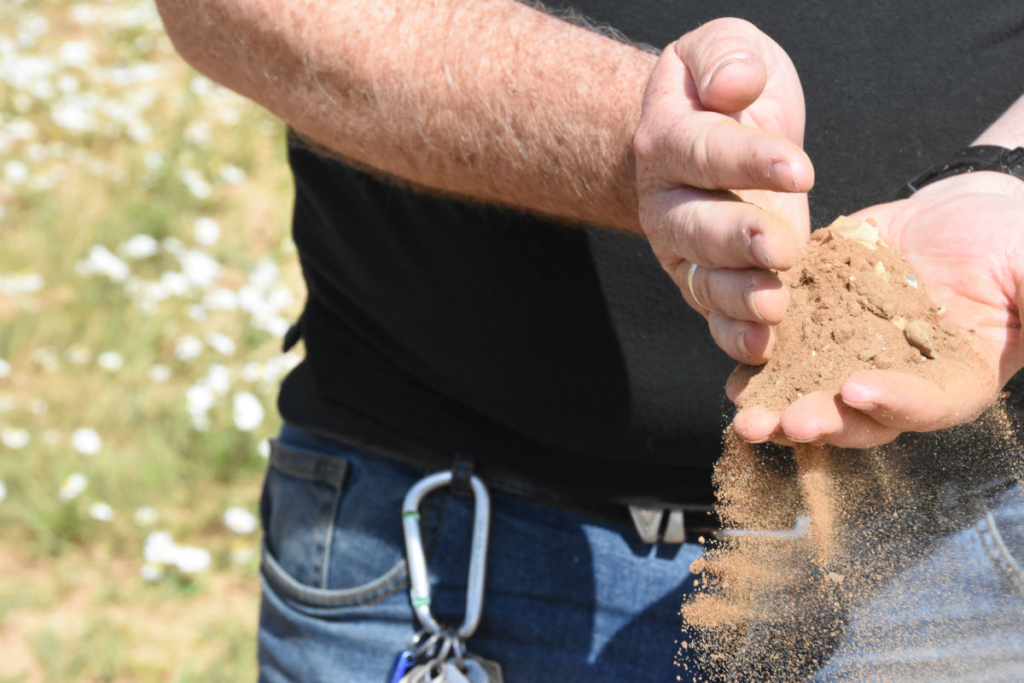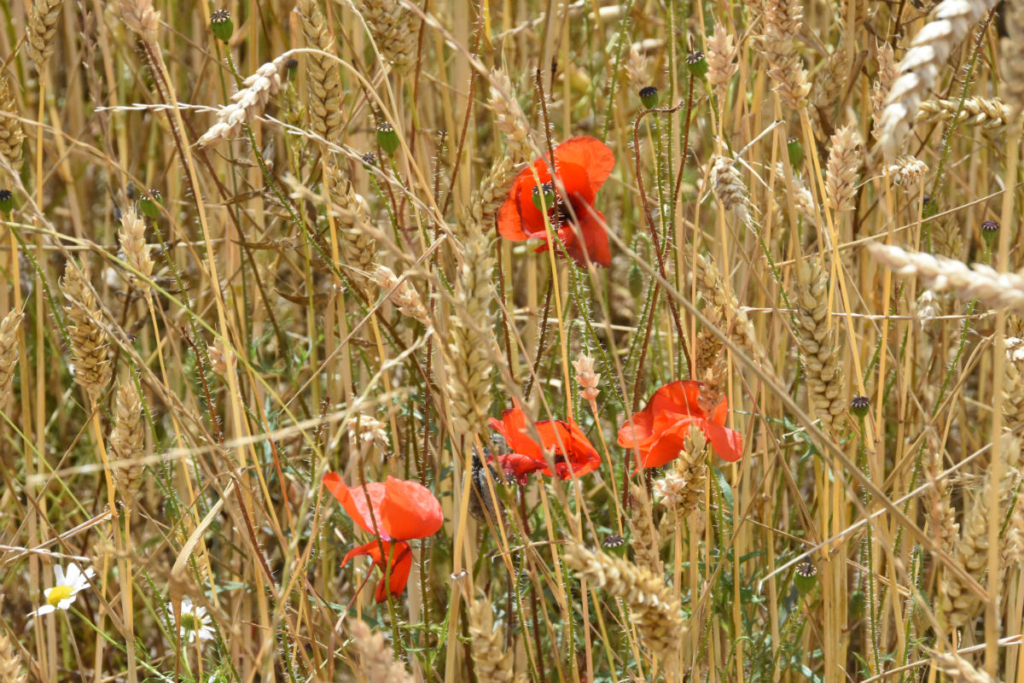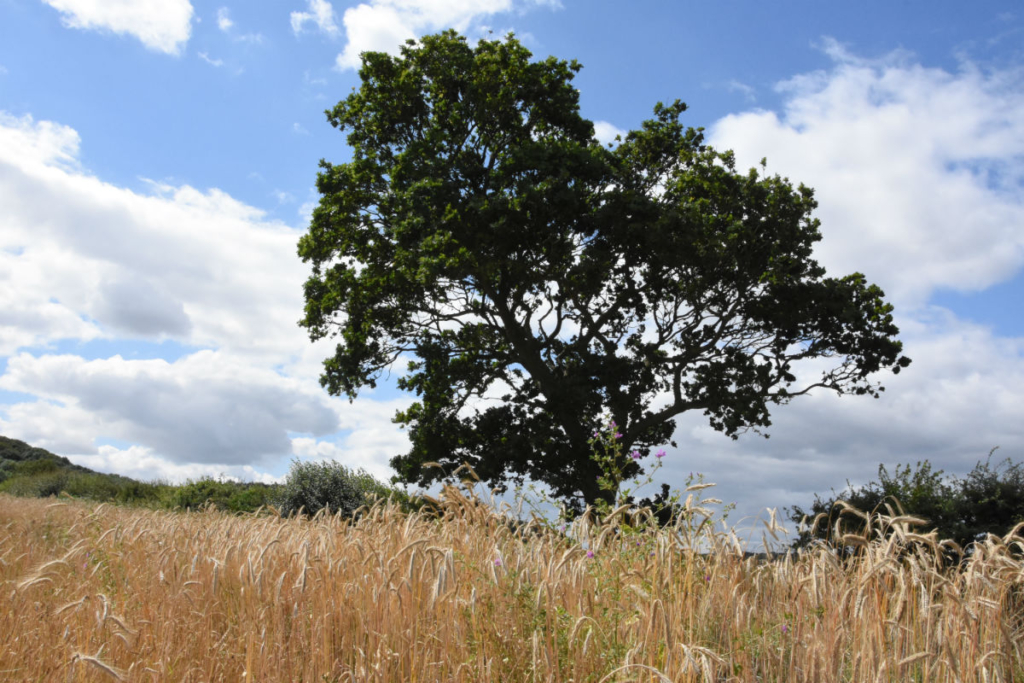Going cold turkey during a perfect storm – Nathan Nelson, Deepdale Farm
Under conversion since January 2021

Nathan Nelson had been farm manager at Deepdale Farm for less than a month when storm Ciara hit the UK on February 10th 2020. Storm Ciara, followed by storm Dennis, dumped inches of rain on the farm, making it their wettest February on record. “I was in chest waders in a blocked drainage pipe by one of our fields, but there was nothing we could do”, says Nathan, who still gets emotional talking about what happened next. At the bottom of one of the sloping fields sits the house of a lady in her nineties; before the torrent of soil and water running off the field reached the road and flooded the basement of the church, it deposited six inches of slush and mud in the lady’s house.
Nathan and Managing Partner Jason Borthwick did their best to provide immediate help and set things right. But the consequences of these two storm events triggered a much more general rethink: in future, the farm would be managed very differently – to prevent anything like this happening again.
Stepping up in a crisis
Neither Jason Borthwick nor Nathan Nelson had ever planned to become farmers. Jason grew up at Deepdale and his father had expected him to take on the farm, but he had other plans and spent years working abroad. Deepdale is situated in one of the most stunningly beautiful parts of the Norfolk coastline; on his return to the UK Jason developed the tourism business, including an eco-friendly campsite and hostel, looking to recreate some of the best features of the backpacker experience from work in tourism in South Africa. He had no plans to work on the farm.
When Nathan gave up his desk job in London for training in countryside management, he started spending more time at Deepdale, running conservation volunteering weekends and surveying the long-unmanaged woodland on the farm. When Jason’s father, Alister, announced he would be retiring, Nathan was offered the job of farm manager. He would be working alongside Alister and take over once both felt he was ready to run the farm by himself. But things turned out very differently: Alister passed away suddenly in September 2019, four months before Nathan was due to start work. In the meantime, Deepdale’s farming team had to manage more or less on their own. Alister had documented much of his work including a cropping plan for the following year and the team knew their jobs.
A perfect storm
Jason’s father had farmed 1,000 acres – some of it rented – with the goal to make the business financially viable. The rotation was based around winter wheat grown in-hand with maize, carrots and potatoes grown by contractors leasing land. Growing carrots, potatoes and maize was all detrimental to soil health, with regular tillage, spraying and irrigation followed by winter harvests that left soil exposed and vulnerable to erosion. The whole farm was heavily dependent on chemicals, with little in the way of organic matter being added back in; even their agronomist, essentially a salesman for a chemical company, was telling them that their soil needed more organic matter – the SOM of the sandy loam soil was down to about 2 percent.

Before storms Ciara and Dennis even arrived, there was a mix of conditions that left the soil extremely vulnerable to erosion; a tight rotation of high-risk crops grown on sloping fields, frequent tillage used for weed suppression (what Gabe Brown described in his book Dirt to Soil as ‘recreational tillage’), soils left bare over increasingly wet winters, irrigation washing out soil aggregates, chemicals suppressing biological activity and soil starved of organic matter. In the run-up to those winter storms, a contractor had also drilled one of the worst-affected fields up and down the slope to minimise turning, creating drainage channels in wheelings that served to accelerate the flow of runoff down the hill. The rainfall that came with storms Ciara and Dennis ran downhill unimpeded, carving out two-feet-deep channels in wheelings and headlands and carrying tonnes of topsoil away with it, into a home, and into the village church.
While Nathan and Jason were still dealing with the aftermath of the flooding, the Covid-19 pandemic then struck and Britain went into lockdown.
First goal: fixing the soil
“Covid acted as a catalyst”, says Nathan. Jason had been forced to furlough tourism employees due to lockdowns and other restrictions and the campsite stood empty; he and Nathan now had time to focus on the future of the farm and address a range of questions raised not just by poor soil health but the coming changes in UK agricultural policy, and deciding on a new direction for the farm following the loss of Jason’s father. In the next few months they made a series of decisions that might otherwise have taken a few years.

Their first point of call was Norfolk Rivers Trust, whose Water Sensitive Farming team advised them on measures to minimise flooding and erosion. They sowed a multi species cover crop mix into the fields most depleted by carrot growing: the mix included plant varieties such as crimson and Persian clover, mustard, vetch, forage peas, rye, radishes and phacelia. Each plant has a specific function – from providing canopy cover which breaks the power of falling rain and protects against soil erosion to fine root networks which hold the soil, and from fixing nitrogen to storing it and preventing it from leaching away. With living roots in the soil and a diverse community of soil organisms, the water infiltration rate and the water holding capacity would hopefully increase.
Nathan and Jason learnt more about the principles of regenerative agriculture, following progressive farmers on social media who were sharing what they knew, and attending as many webinars as they could where more farmers were providing virtual farm walks, when in-person events were affected by Covid. Further research introduced them to agroforestry, organic farming and eventually to Stephen Briggs, an organic farmer, agroforestry pioneer and consultant.
Jason and Nathan approached Stephen Briggs with the goal to restore soil health across the farm. After an initial assessment, Briggs suggested conversion to organic, and followed up with a feasibility study that looked at farm finances, implements and a range of other considerations that took organic conversion from being an abstract concept to an achievable goal that supported their aims.
Jason and Nathan had already started an extensive redesign of the farm, placing it into a comprehensive mid-tier Countryside Stewardship scheme that took sixty percent of the farm out of production and into features for wildlife. This served a few different functions. Jason and Nathan wanted to do a great deal more to support biodiversity on the farm, being in a beautiful place on the North Norfolk coast, with a thriving tourism business on site. Features such as beetle banks could support crop pest management lessening the need for artificial controls. Finally, fields with large buffers of permanent green cover such as wild bird seed mix and flower-rich margins would better cope with heavy rainfall events by holding and slowing water.
Going organic would make it a near certainty that the goals of the stewardship scheme would be met. The combined payments for Countryside Stewardship and organic conversion over the next five years would at least “keep the lights on and pay the staff”, as BPS payments dropped by over 60% in the same period and the farm lost out on income from volume crop sales and land rental for root crops.
Going cold turkey
“It felt good to convert our chemical store into a seed store”, says Nathan. But going organic was also “another thing I would have to learn”. While there are 265 ha of agricultural land, only 100 ha are planted with cash crops, in 20 five-hectare plots surrounded by Countryside Stewardship options. The five-year rotation developed with Stephen Briggs starts with two years of clover leys, followed by cereals, a legume break crop, and in year five, cereals again, undersown with a clover ley to restart the rotation. Winter cover crops are used throughout the rotation to shield the soil. In any one year there will be 40 ha of herbal leys, 40 ha of cereals and 20 ha of legumes. The remaining 165 ha will not be cropped and remain as wide margins planted with flower and bird seed mixes and cultivated margins to support arable plants.
We walk out to the fields because Nathan wants me to see the wheat. Stephen Briggs recommended YQ population wheat developed by Martin Wolfe at the ORC, and Siskin wheat, which they have grown side-by-side in the same plot. The YQ outgrew cover crop volunteers and other weeds producing a clean-looking crop. Nathan hopes that he will be able to harvest enough to plant 5 ha with it next year. The Siskin appeared to perform less well than the YQ with more weed competition in the crop, but yielded better. “We grow what we can through the conversion and we’ll be glad if we generate any income from it” says Nathan. Beginning the conversion this year was like “… opening Pandora’s box, all the marestail and ragwort has come out. Under organic you have nowhere to hide. All the underlying issues come up in conversion. It is like the drug addict who gets the shivers and comes out in a rash”.
Big dreams for the future
“We have a rule that we don’t throw out a mad idea until we have batted it around for a while, and we still may implement it anyway”, says Nathan. He hopes to bring animals back to the farm, and has been discussing options with a nearby farmer he met through livestock consultant Liz Genever’s Carbon Dating service, aimed at matching arable farmers with livestock owners. The clover leys are grazable and winter cover crops have been planted with grazable options omitting red clover which is alleged to present a risk of abortion in ewes.
Nathan would like to introduce different grains such as spelt, milling wheat and malting barley. Next to the campsite and also on Deepdale land are a cafe and several shops that not only cater for the campers, but also serve local people and tourists passing by on the main road. It’s a great opportunity to sell local produce. “We want to show the connection between what we do on the farm and the food that comes from it”, says Nathan who is also thinking about conservation volunteering and engagement, school visits and care farming. Oh, and Jason wants Deepdale to be carbon negative by 2025. How is that all going to work? Who knows, it’s all work in progress. In 2020 they started “learning to live with having no control”. In 2021 they are becoming accustomed to riding the storm.

Written by Marianne Landzettel & Nathan Nelson, with photographs by Martin Kunz


